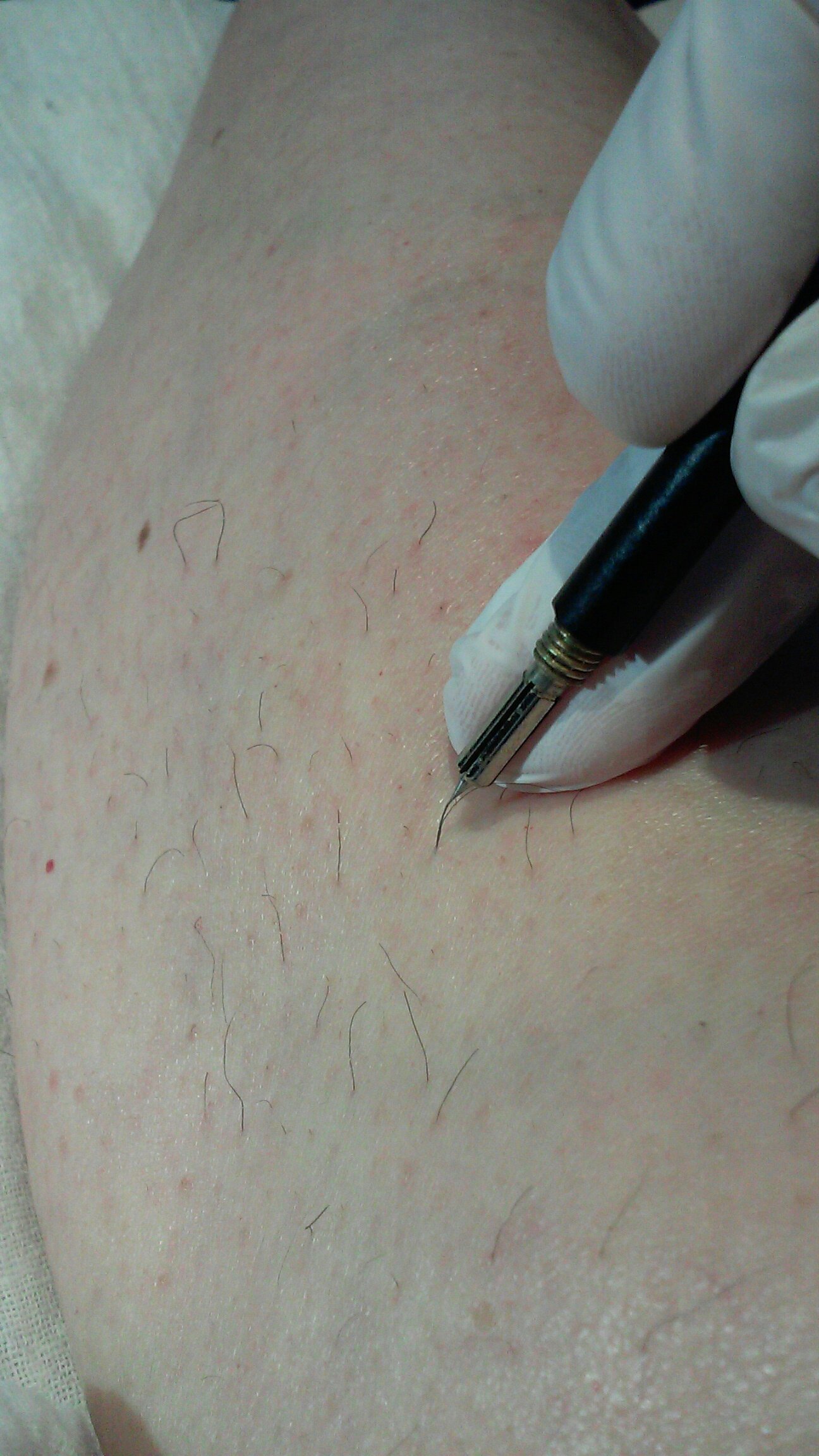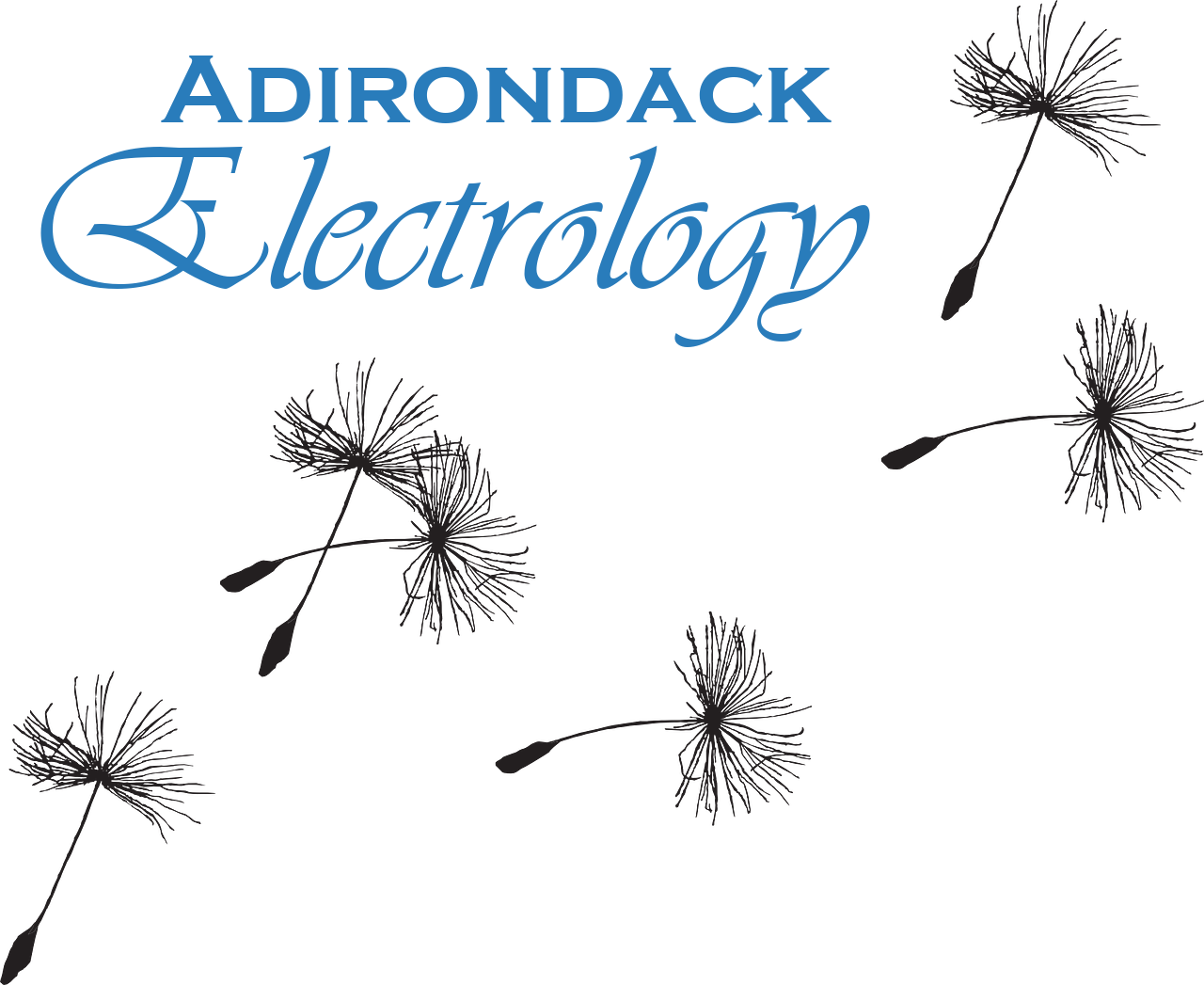Frequently Asked Questions
-
Electrolysis hair removal utilizes heat at the base of the hair follicle. The heat source is accurately applied through the use of a fine wire probe, and a small electrical current, into each and every hair that is to be treated. This results in the hair separating from the follicle, and can easily be removed with a tweezer.
-
Electrolysis is the only FDA-approved method of permanent hair removal and has been proven safe on all hair colors, skin types, and genders.
-
Because electrolysis does not rely indirectly on pigment, electrolysis hair removal is suitable for any color hair and any color skin.
-
When the electrical current is applied to the hair follicle through the probe, a sensation comparable to a pinch or a sting is common and generally well tolerated. The intensity of the electrical current can be adjusted in different ways to make the sensation more comfortable for the customer.
Immediately after treatment, the skin may be red, tender, and/or swollen. This is temporary and should resolve quickly. Scabbing and scarring are possible, though very uncommon.
Post-treatment you can use witch hazel, diluted tea tree oil, or aloe to soothe the skin. Cold compresses may be applied to reduce swelling.
Any side effects should be discussed with Angela prior to your next appointment. -
You should refrain from using any make-up, lotions, or deodorants that may clog the pores for 24 hours after treatment.
-
When preparing for electrolysis, the customer is asked to leave the hair as is, or if trimming is necessary to minimize appearance in between appointments, the hair should be left at least long enough to be grabbed with a tweezer, and long enough so that the angle and direction of growth are evident.
-
Skin that will be treated should be clean and free from products such as lotion, make-up, and deodorants. A pain relief tablet may be used prior to treatment to reduce discomfort.
-
Galvanic Electrolysis, which is the oldest, is a chemical method that utilizes a direct current to convert normal body salt and does not affect any other area. One probe or several probes working simultaneously can be used during this process.
Thermolysis is a method that uses a high-frequency current to produce heat in the area influenced by the current. This heat cauterizes and destroys the dermal papilla. One sterile probe is used during this process. Two variations of thermolysis are "Flash" or "Automatic" Thermolysis which uses a split second impulse of current and "Manual" Thermolysis which requires several seconds at a lower intensity to achieve permanent removal.
The Blend method combines both currents together in the same probe. Thermolysis enhances the action of the galvanic method to produce a faster process.
During your free initial consultation and first appointment, Angela will discuss your options and determine the best fit for your specific needs.
-
Laser hair removal and electrolysis are very different. Laser hair removal uses infrared light to generate heat, and the pigment of the hair acts as a conductor and pulls that heat into the base of the hair follicle, which will damage the follicle's ability to grow a robust hair. Because laser relies on conductivity of the pigment or color of the hair, only hair that is dark brown or black and skin that is fair is suitable for laser treatment. Hair that is blond, white, gray, red, or light brown will not respond to the infrared light.
Electrolysis hair removal also utilizes heat at the base of the hair follicle, but the heat source is accurately applied through the use of a fine wire probe, and a small electrical current, into each and every hair that is to be treated. Because electrolysis does not rely indirectly on pigment, this method of hair removal is suitable and extremely effective for any color hair and any color skin. -
Post-treatment you should avoid rubbing, scratching, or over-touching the treated area.
Do not use alcohol-based products such as perfume or rubbing alcohol.
If scabs do form, do not scratch them. Removing scabs can result in an increased chance of infection and may cause scarring.
Do not use any products that may clog pores such as lotion, make-up, or deodorant for 24 hours after your treatment. Applied make-up post-treatment should be fresh and purchased within the past 90 days to reduce infection.
Try to avoid excess sweat for 24 hours after treatment as this may cause a build-up in bacteria and result in infection.
Avoid tanning beds and excessive sun exposure for at least 48 hours after treatment. -
Hair removal can be done on the hairline, eyebrows, ear, top of nose, cheeks, sideburn area, upper and lower lip, chin, neck , throat, shoulders, back, chest, breasts, abdomen, arms, legs, bikini line, hands, feet, toes, and fingers.
We do not treat the inside of the ear canal or the inside of the nose. Hairy moles can be treated with the written permission of a doctor. It is perfectly safe to treat pregnant women, but the breast and abdominal area should be avoided after the sixth month of pregnancy due to tenderness in these areas as well as possible hormone stimulation. -
Because electrolysis does not rely indirectly on pigment, this method of hair removal is suitable for any color hair and any color skin and is much more effective than laser hair removal for light-colored hair.
-
A treatment can last 15 minutes or an hour or more, depending on the area to be treated and how much hair is there, and how much wants to be accomplished in each session.
Since each hair is treated individually, the total number of sessions necessary depends on the size of the area being treated, how long each session is booked for, and the density of the hair being removed. -
Many factors can contribute to the growth of excess hair:
Heredity
Normal physiological changes such as puberty, menopause, or pregnancy
Malfunction of the endocrine system
Medication
Topical influences
Stress
-
Keep the area clean with alcohol, witch hazel, hydrogen peroxide, soap and water, or other suitable
antiseptics.
Apply ice to the treated area to reduce swelling if necessary.
If advised, apply an antibiotic cream to help minimize infection in the treated area.
-
Laser hair removal uses infrared light to generate heat, and the pigment of the hair acts as a conductor and pulls that heat into the base of the hair follicle, which will damage the follicle's ability to grow a robust hair.
Electrolysis hair removal also utilizes heat at the base of the hair follicle, but the heat source is accurately applied through the use of a fine wire probe, and a small electrical current, into each and every hair that is to be treated.
Find more information about the similarities and differences of laser hair removal vs. electrolysis here.
Electrolysis in Action

Electrolysis probe being inserted into the hair follicle for hair removal

Hair is removed with root intact

Each electrolysis treatment permanently reduces hair growth

Slight redness can occur for a short time post-treatment

Smooth, hair-free leg after an electrolysis treatment
